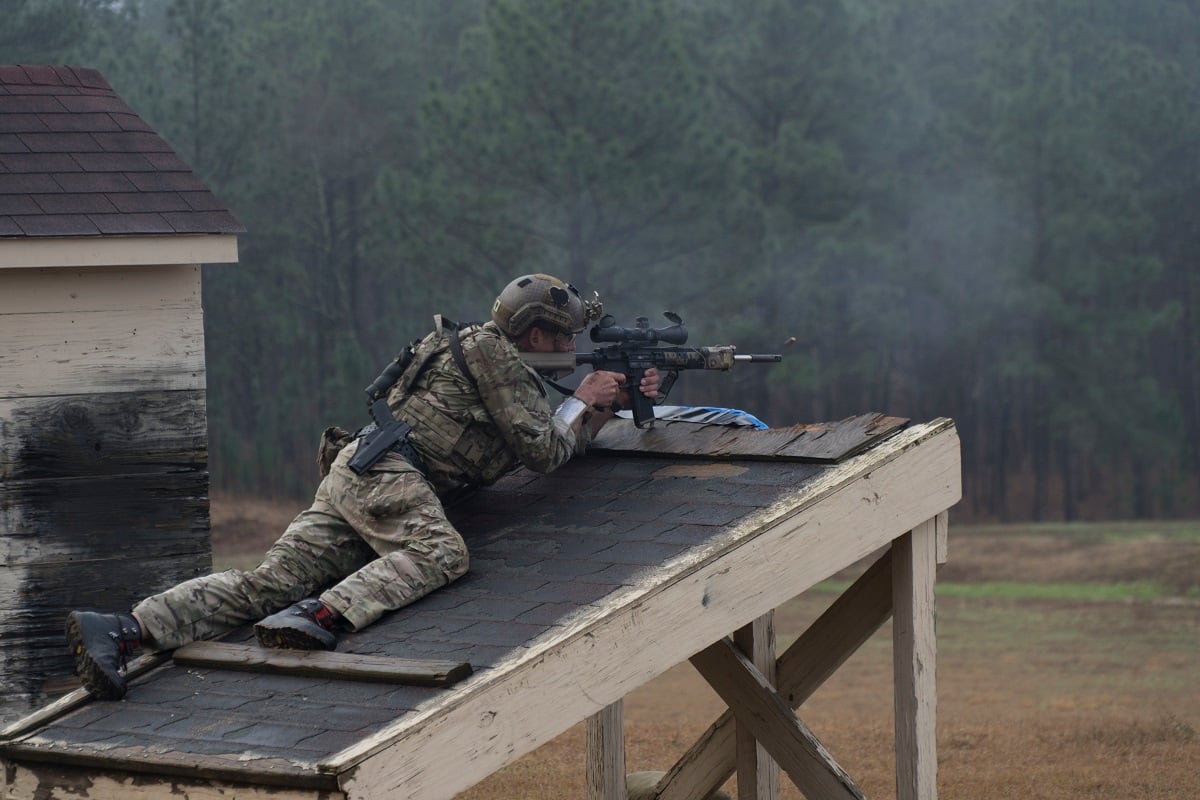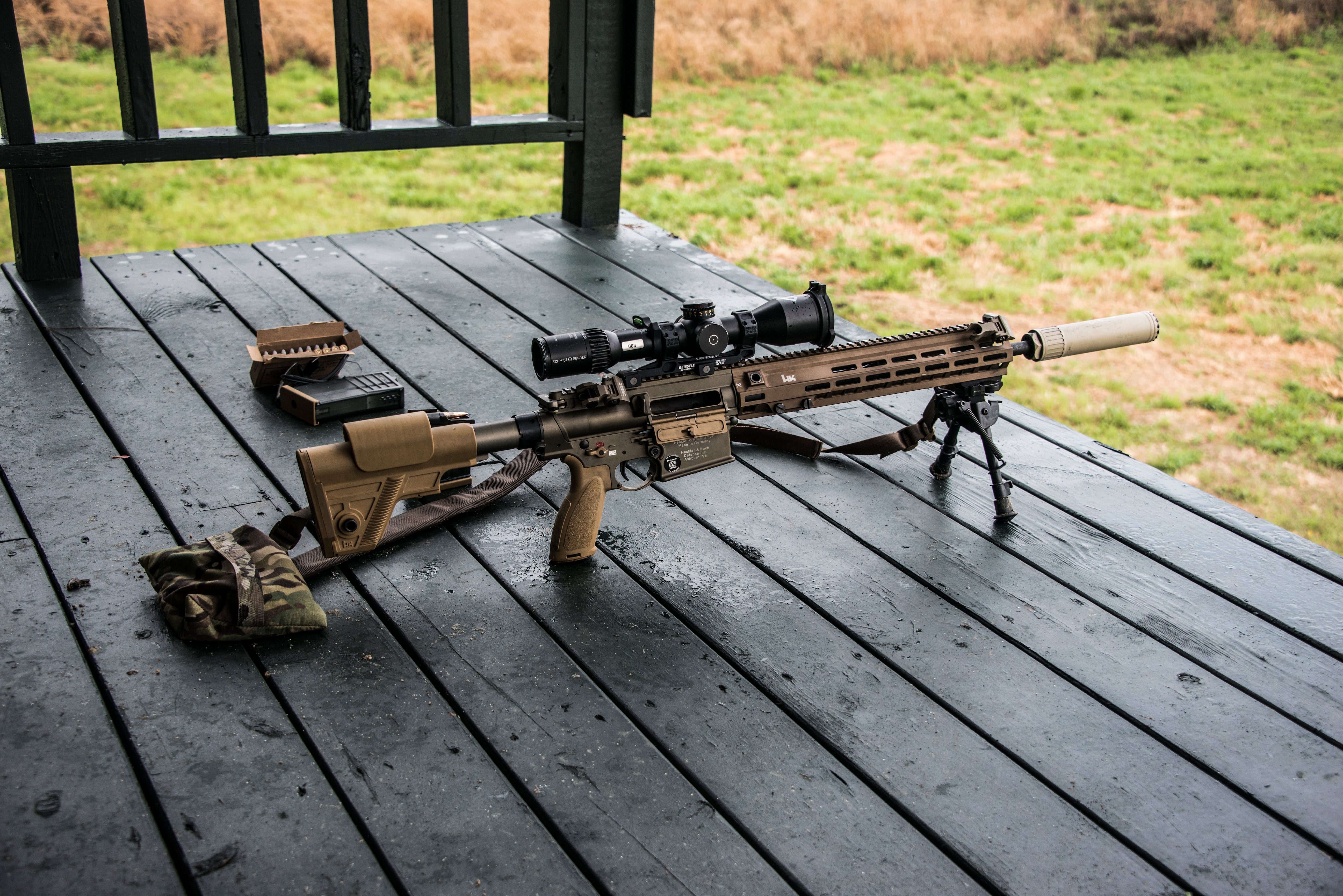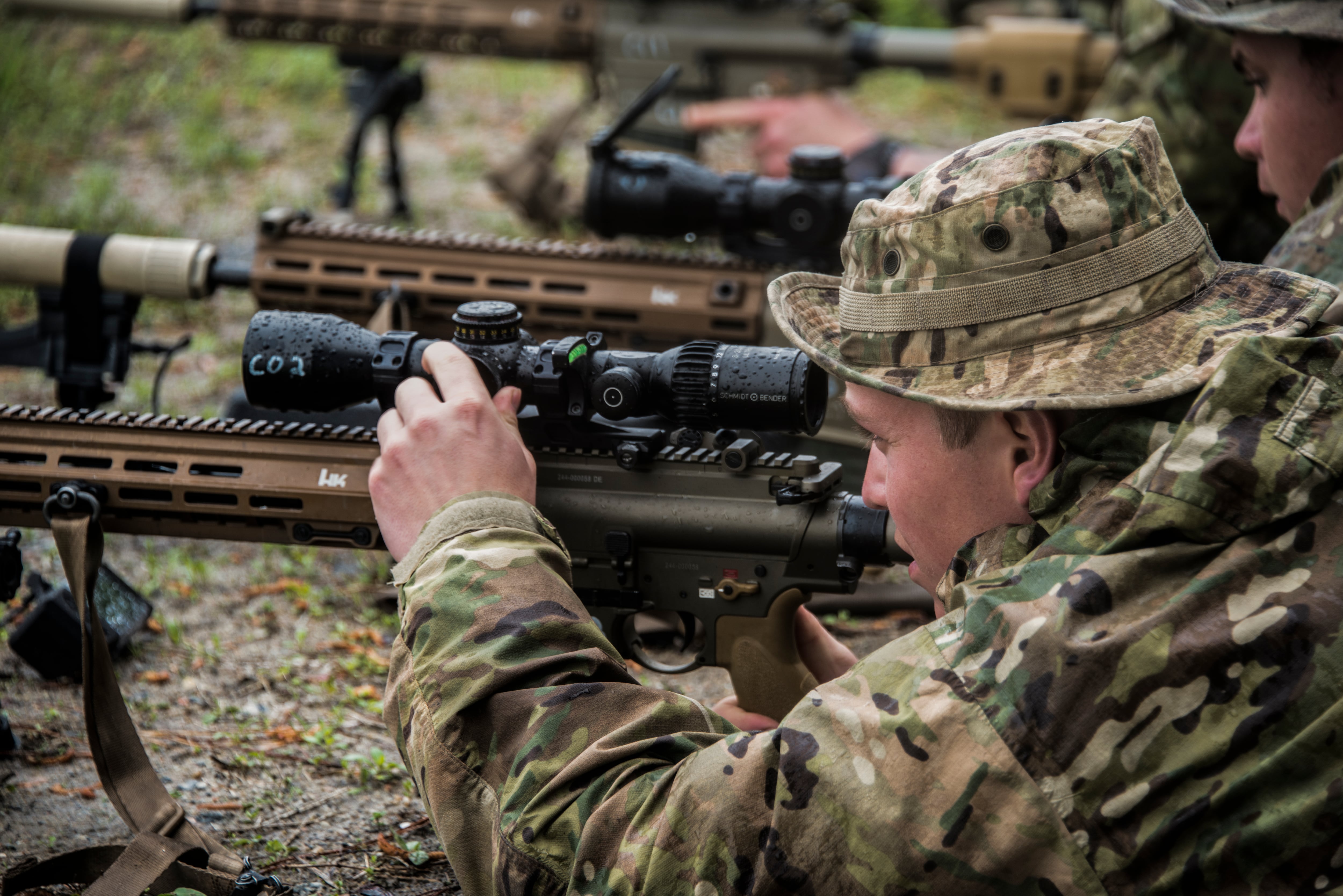Soldiers with the 82nd Airborne recently conducted tests of the Army’s newest offering for a compact sniper rifle — and they liked it.
Earlier this month snipers with the 82nd at Fort Bragg, North Carolina, put the Compact Semi-Automatic Sniper System through airborne infiltration test trials.
One of the Operational Test Command’s Airborne and Special Operations Test Directorate NCOs, Sgt. 1st Class Ross Martin, said in a release that the compact nature of the rifle is appealing to airborne forces who have to maneuver their equipment in cramped planes for jumps.
Typically, the longer-barrel standard rifles can be cumbersome.
RELATED

“Current sniper systems are equipped with 20-inch barrels, sound suppression systems and full-length stocks that provide accuracy and a stable firing platform required of any precision rifle,” said David Parris, a CSASS trainer with U.S. Army Tank-automotive and Armaments Command’s Soldier Weapons Support.
As the Army shifts focus to dense urban environments the equipment, such as the sniper rifle, follow suit.
“The CSASS is smaller, lighter, and more ergonomic, as the majority of the changes were requested by the soldiers themselves,” said Victor Yarosh told Army Times in 2018. Yarosh works on the Army’s Soldier Weapons program.
“The rifle is easier to shoot and has less recoil, all while shooting the same round as the M110. [Additionally,] the CSASS has increased accuracy, which equates to higher hit percentages at longer ranges,” Yarosh said.
The newest CSASS not only has a shorter barrel, but also an adjustable stock for easier transport and comfort.
“The CSASS is much shorter and lighter than our current system, which will make long dismounted movements and reaction to contact more efficient,” said Spc. Nicholas Farmer, a sniper in C Troop, 1st Battalion, 73rd Cavalry Regiment.
Most M4s max out at near 300 meters, but the CSASS allows shooters to reach out to 600 meters. The new rifle can fire the M80A1 Enhanced Performance Round and the XM1158 Advanced Armor Piercing Round.

It has a different buttstock and barrel twist than previous CSASS models, comes in just under 10 pounds and uses a Sig Sauer Tango 6 variable 1x6 power scope.
Spc. William Holland, a sniper with 2nd BN, 508th Parachute Infantry Regiment, said that the rifle is “lightweight and compact, [which] makes for a more manageable load during post drop operations.”
Being airborne, the soldiers rely on maintaining their weapon’s optic zero, given the jostling and sometimes hard impact nature of their jobs.
To measure how well the CSASS maintains that zero, the test team used a mobile weapons bore sight collimator to ensure the “pre-mission” zero was not degraded by parachute infiltration shock.
Once this data was collected, snipers conducted a known distance live fire after static line and military free fall operations.
Military Times reported in January that Special Operations Command snipers will soon use the Sig Sauer TANGO6T 1-6x24 Riflescope for their CSASS.
Sig Sauer also won the optic competition for the Army’s Squad Designated Marksman Rifle with their TANGO6 scope.
The SDMR program has been part of a larger shift for the Army to put sniper-like capabilities inside of the squad, giving the base unit of the formation more range and lethality with its M110 Compact Semi-Automatic Sniper System, or CSASS.
Tactically, Army leaders see the sniper as a force enhancer because they can conduct a number of missions.
“They provide a surveillance mission where they use their high-powered scope to observe activity downrange,” Yarosh said. “A sniper can pin down an enemy force through sniper concealment and engagement to provide the right shots at the right time. They can also prevent an enemy force from moving out of cover, which allows our maneuver forces to exploit the enemy by moving into a better position and engage.”
Todd South has written about crime, courts, government and the military for multiple publications since 2004 and was named a 2014 Pulitzer finalist for a co-written project on witness intimidation. Todd is a Marine veteran of the Iraq War.





